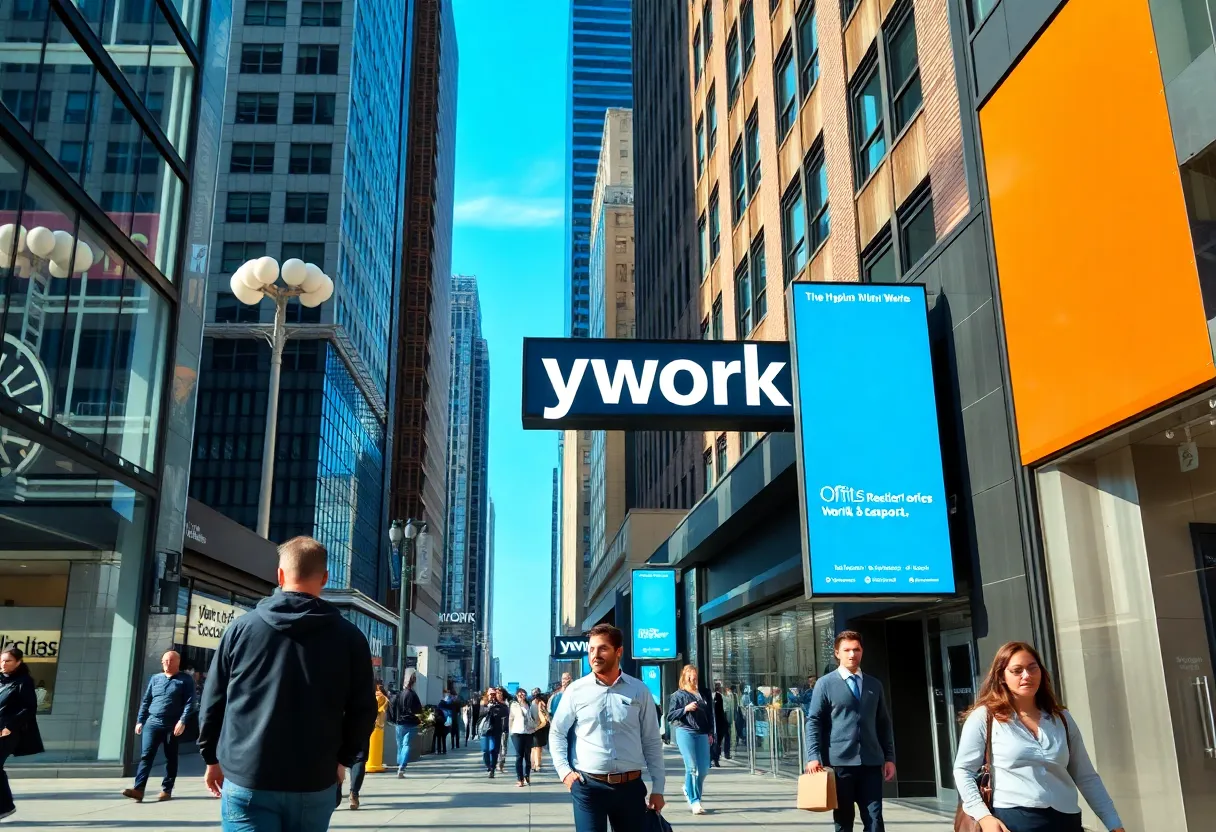Boston, September 12, 2025
News Summary
Boston’s office market is stabilizing as hybrid work schedules become the norm, bringing employees back to downtown offices part of the week. Despite a notable 8% increase in foot traffic and some office spaces reaching high occupancy levels, approximately 25% of office space remains vacant. Additionally, commuter rail ridership has not fully rebounded, and midweek retail sales continue to lag behind pre-pandemic levels. City policies aim to promote residential growth and adapt to evolving work practices.
Boston
Boston’s office market is stabilizing as many employers adopt steady hybrid schedules that keep employees in downtown offices part of the week, while vacancy and transit use remain below pre-pandemic levels. Employers large and small have largely settled on hybrid models, typically asking staff to be on-site three to four days per week, which has helped increase weekday activity but left a significant share of office space empty.
Key developments and current conditions
The downtown area saw an 8% increase in foot traffic in the first half of 2025 compared with the same period in 2024, reaching about 75% of pre-pandemic levels. The uptick has been supported by new office activity, large leasing moves, and openings in the office core. One major downtown office building reports roughly 90% leased occupancy, and ground-floor restaurants in that building have recorded higher revenues tied to increased office presence.
Despite these gains, about 25% of downtown office space remains vacant—roughly 10 million square feet, which is comparable to the combined size of five major city towers. There are relatively few large employers actively seeking to relocate or expand downtown, meaning large-scale new demand remains limited.
Workplace practices and employer intentions
Most local employers have formalized hybrid schedules and are not expecting major changes in the near term. Several notable firms have settled on policies that require employees to come in three to four days a week. Regional surveys indicate that the majority of employers plan to continue with their current hybrid approaches rather than pushing for full-time returns or further loosening in-office requirements.
Transit and retail impacts
Commuter rail ridership has not fully rebounded: ridership on the regional commuter rail system fell by 7% in the first six months of 2025 compared with the same period in 2024, and remains 16% below 2019 levels. Retail and food-service businesses that rely on weekday office workers continue to face uneven demand. Midweek sales at a downtown café that depends heavily on office traffic are running at about 60% of pre-pandemic levels, affecting staffing and operating hours.
Market drivers and comparisons
New office supply and expansions are contributing to traffic and leasing in pockets of the downtown market. The completion of a major new tower and expansion moves by a significant technology firm into central office space have been cited as contributors to recent gains in foot traffic. By contrast, other major cities have seen different trajectories; one large financial district has reported office visits that now exceed pre-pandemic levels, illustrating geographic variation in return-to-office dynamics.
Policy responses and development strategy
City officials are encouraging more residents in the downtown core to support local businesses and reduce reliance on commuter-only foot traffic. The municipal administration is pursuing tax incentives to facilitate office-to-residential conversions and has proposed rezoning that would allow for taller buildings in the downtown core to support additional housing development. Planners note that downtown contains far fewer apartments per capita than many other U.S. city centers, and adding housing is viewed as a way to diversify daytime and evening demand for retail and services.
Outlook
Overall, the market shows signs of stabilization driven by widespread adoption of hybrid work patterns and targeted leasing wins, but challenges persist. Vacancy remains elevated relative to historic norms, commuter rail ridership is lagging, and midweek retail recovery is incomplete. Policy measures to encourage residential growth downtown and continued corporate demand for multi-day in-office schedules are likely to shape the next stage of recovery.
Frequently Asked Questions
How many days per week are workers expected in the office?
Many employers in Boston have set hybrid schedules requiring employees to be in the office about three to four days per week.
Has downtown foot traffic returned to pre-pandemic levels?
Foot traffic increased 8% in the first half of 2025 compared with the same period in 2024, but overall it remains at roughly 75% of pre-pandemic levels.
What is the current office vacancy in downtown Boston?
Approximately one in four downtown office spaces is vacant, equal to about 10 million square feet.
Commuter rail ridership dropped 7% in the first half of 2025 versus 2024 and is about 16% below 2019 levels.
What steps is the city taking to support downtown recovery?
The city is promoting residential construction by pursuing tax incentives for office-to-residential conversions and proposing rezoning to allow taller downtown buildings to add housing capacity.
Quick reference table: Key figures
| Metric | Figure / Note |
|---|---|
| Typical hybrid in-office days | 3–4 days per week |
| Foot traffic change (H1 2025 vs H1 2024) | +8% (about 75% of pre-pandemic) |
| Downtown office vacancy | ~25% vacant; ~10 million sq ft |
| Commuter rail ridership (H1 2025 vs H1 2024) | -7% (down 16% vs 2019) |
| Leasing highlight | Major downtown building ~90% leased; ground-floor retail showing revenue gains |
| Midweek café sales | ~60% of pre-pandemic levels |
| Policy actions | Tax incentives for office-to-residential conversions; rezoning proposal for taller buildings |
Deeper Dive: News & Info About This Topic
HERE Resources
Tevogen Bio’s Mittul Mehta to Speak at Startup Forum
QinetiQ Extends Lease for R&D Space in Waltham
Historic Ebenezer Hancock House in Boston Hits the Market
Hasbro to Relocate Corporate Headquarters to Boston
CBRE Boston Multifamily Team Achieves Remarkable Success
Hasbro Relocates Corporate Headquarters to Boston
Hasbro to Relocate Headquarters to Boston’s Seaport District
New Leadership at The Cooperative Bank of Cape Cod
Downtown Boston Faces Economic Revival Challenges
Skanska Partners with Simmons University for Mixed-Use Development
Additional Resources
- Boston Globe: Return to office has settled
- MassLive: Massive education department layoffs
- Boston Globe: Return to Office for Boston Hybrid Workers
- CBS News: Dentist hidden camera bathroom
- Universal Hub: Chief of Staff Boston Office Accountability Charged
- Wikipedia: Boston
- Google Search: Boston office market 2025
- Google Scholar: Boston office vacancy 2025
- Encyclopedia Britannica: Boston
- Google News: Boston return to office

Author: STAFF HERE BOSTON WRITER
The BOSTON STAFF WRITER represents the experienced team at HEREBoston.com, your go-to source for actionable local news and information in Boston, Suffolk County, and beyond. Specializing in "news you can use," we cover essential topics like product reviews for personal and business needs, local business directories, politics, real estate trends, neighborhood insights, and state news affecting the area—with deep expertise drawn from years of dedicated reporting and strong community input, including local press releases and business updates. We deliver top reporting on high-value events such as Boston Marathon, Head of the Charles Regatta, and Boston Harborfest. Our coverage extends to key organizations like the Greater Boston Chamber of Commerce and Associated Industries of Massachusetts, plus leading businesses in finance, biotech, and insurance that power the local economy such as Fidelity Investments, Biogen, and Liberty Mutual Insurance. As part of the broader HERE network, we provide comprehensive, credible insights into Massachusetts's dynamic landscape.





